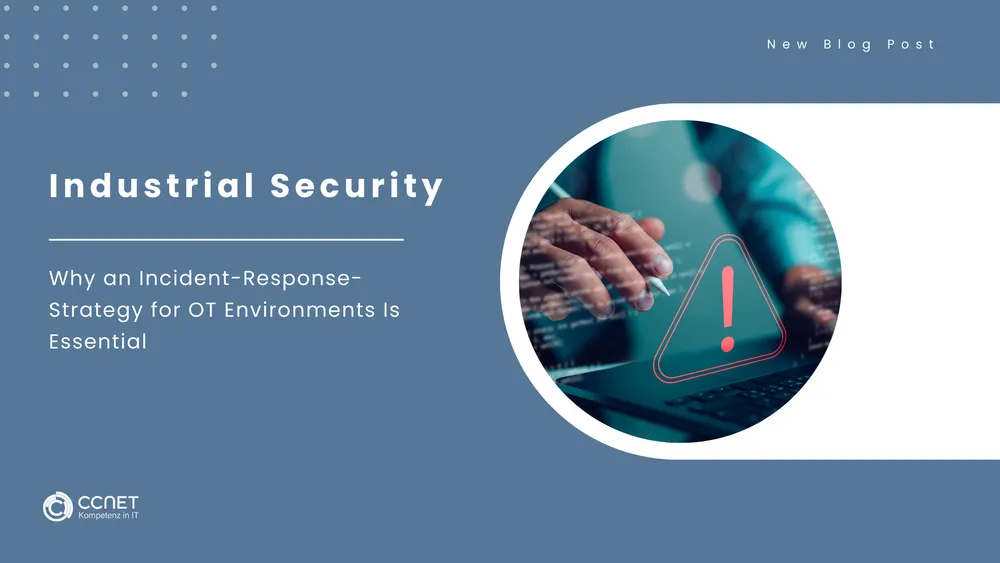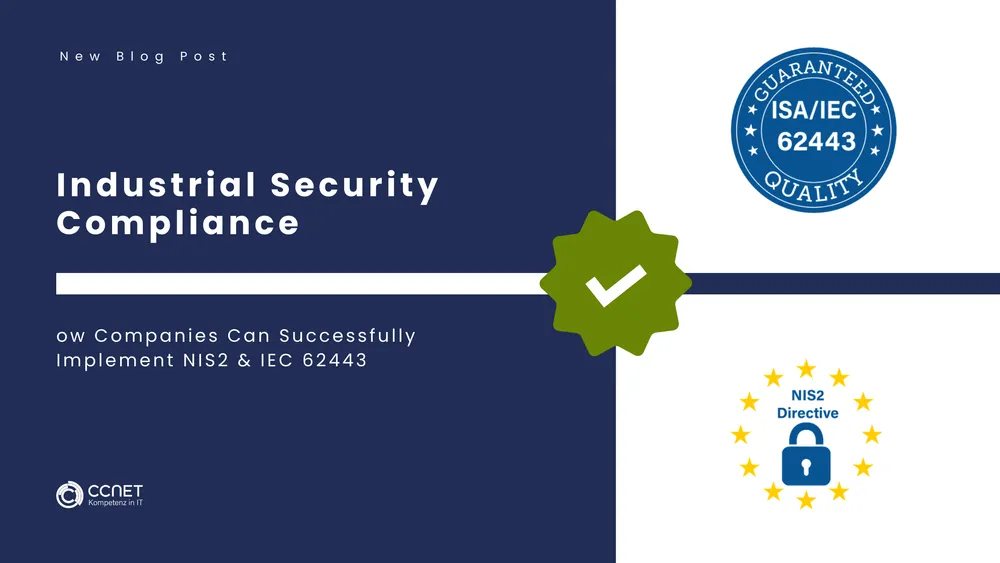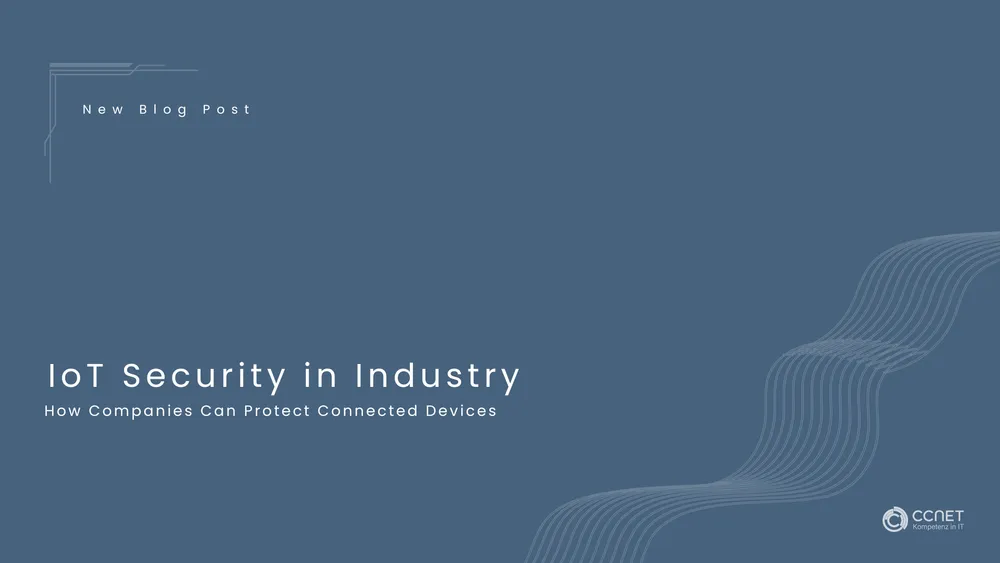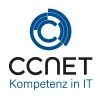
CCNet
May 7, 2025 • 3 min read
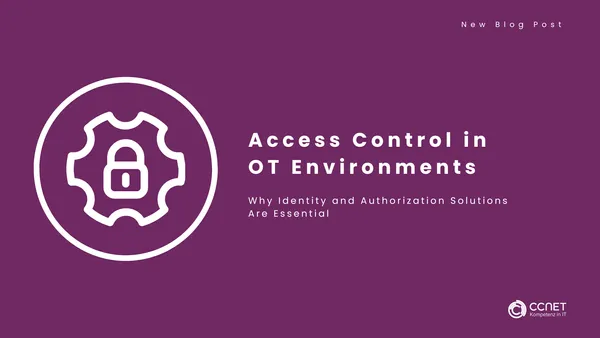
Access Control in OT Environments: Why Identity and Authorization Solutions Are Essential
Production facilities are increasingly connected – but who has access to which systems?
Many industrial companies still rely on outdated or inadequate access controls, which expose them to both internal and external threats.
Further information can be found here: it-process-hardening
The Problem?
Employees, maintenance teams, and external service providers often have uncontrolled access to machine controls.
Passwords are shared or not regularly changed.
A single compromised account can jeopardize the entire production process.
Without a modern Identity & Access Management (IAM) solution, companies remain vulnerable to cyberattacks, internal sabotage, and compliance violations.
The Solution?
A comprehensive IAM system that ensures authentication, authorization, and traceability in OT environments.
Why Are Insecure Access Controls a Problem in OT Networks?
Modern production facilities consist of IT, OT, and IoT components that constantly exchange data and require remote access. However, many companies lack clear policies for managing user permissions, leading to massive security risks.
Common Access Control Issues in OT environments:
- Uncontrolled remote access to machines – hackers can use stolen credentials to gain access.
- Shared or hardcoded passwords – many control systems use generic or embedded credentials.
- Lack of Multi-Factor Authentication (MFA) – attackers can infiltrate the system with stolen logins.
- No monitoring of user activities – no clear traceability of who did what and when.
- No Role-Based Access Control (RBAC) – many users have more permissions than necessary.
Without strict access control, a single compromised account can shut down the entire production line.
Notable Security Incidents Caused by Insecure Access Controls
-
Attack on an Italian Automotive Supplier (2022)
Hackers used stolen credentials from a maintenance provider to infiltrate the production network unnoticed.
Consequence: Machine controls were manipulated, causing production delays and quality fluctuations.
Prevention with IAM: Strict authentication & authorization would have blocked unauthorized access. -
Attack on a European Pharmaceutical Company (2021)
External service providers retained access to SCADA systems after their contract ended.
Consequence: An insider altered process parameters, leading to a production shutdown.
Prevention with IAM: Automated rights management would have revoked access after contract termination. -
Ransomware Attack on an Energy Company (2020)
Hackers compromised an insecure remote login and took control of industrial control systems.
Consequence: Multiple critical systems were encrypted, resulting in millions in losses.
Prevention with IAM: Multi-Factor Authentication & Role-Based Access Control (RBAC) would have prevented the attack.
Conclusion: Without Strict Access Controls, Industrial Companies Are Extremely Vulnerable to Attacks
How Can Industrial Companies Secure Their OT Environment?
-
Implement a Zero-Trust Approach for OT Access
Every access request must be authenticated & authorized – even within the network.
No automatic permissions – each request is individually verified.
No inherent trust in internal networks – all users & devices must continuously re-authenticate. -
Enable Multi-Factor Authentication (MFA)
No MFA, no access to machine controls & SCADA systems.
Protection against phishing & stolen credentials.
Use hardware tokens or mobile authenticator apps. -
Implement Role-Based Access Control (RBAC) for OT Environments
Users receive only the permissions necessary for their tasks.
Maintenance teams have time-limited access – revoked automatically after use.
Privileged user accounts are protected by additional security measures. -
Introduce Automated User Management
Access rights are assigned automatically based on job role, location, and device.
Access is immediately revoked when an employee or service provider leaves.
Dynamic permission adjustments based on usage patterns and security conditions. -
Real-Time Monitoring & SIEM Integration for Suspicious Activity
Security Information & Event Management (SIEM) analyzes user activities.
Intrusion Detection Systems (IDS) detect unauthorized access attempts.
Automatic alerts & response actions for unusual activities. -
Conduct Regular Audits & Compliance Reviews
Annual review of all access rights & roles.
Perform penetration tests to identify potential security gaps.
Ensure traceability and documentation of access controls for ISO 27001 & NIS2 audits.
Conclusion: IAM Is Essential for Secure Industrial Environments
Attacks on industrial control systems often result from insecure access management.
Modern IAM solutions enable strict access control in OT environments.
Zero Trust, MFA, and Role-Based Access Control (RBAC) are crucial for protecting production.
Visit Us at SPS Parma and Learn How Modern Identity & Access Controls Can Be Integrated into Industrial Networks
